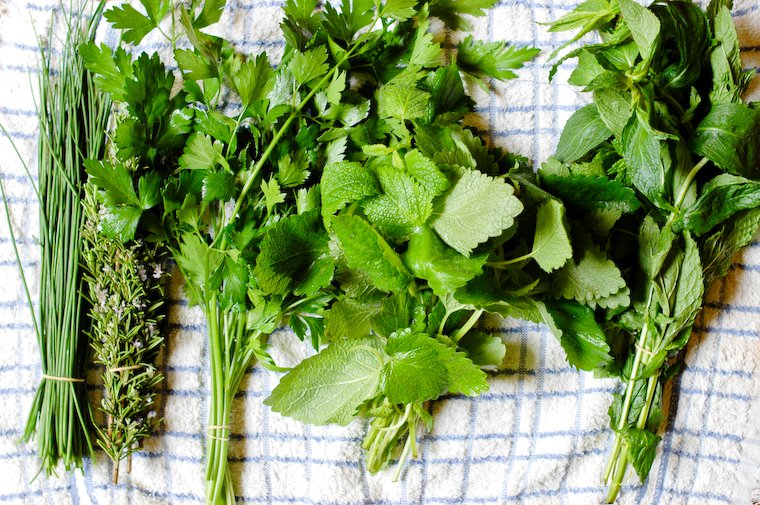How to keep greens fresh and happy seems to be the culinary equivalent of keeping one’s skin young: it’s a losing battle, but everyone hopes to find the magic technique.
Wash, don’t wash (we’re talking about greens again now; we’ll address personal hygiene another time), wrap in plastic, cloth, or a paper bag, keep on the counter or refrigerate, and even this one: put the herbs upright in a glass of water and place on a shelf or in the door of your fridge. (That gave my French-sized refrigerator a good laugh.)
I’ve experimented with those ideas to varying degrees of success — mostly on the lower end of the scale — and after throwing out enough wilted herbs to start a compost heap, I’ve finally found the M.O. that works for me, so I thought I’d share.
When I get back from the greenmarket on Saturday mornings, I put my purchases away, sit down for a cup of coffee, then get to work.








